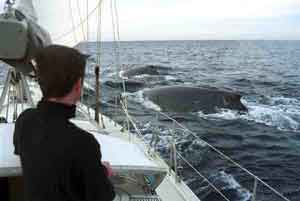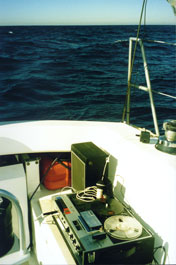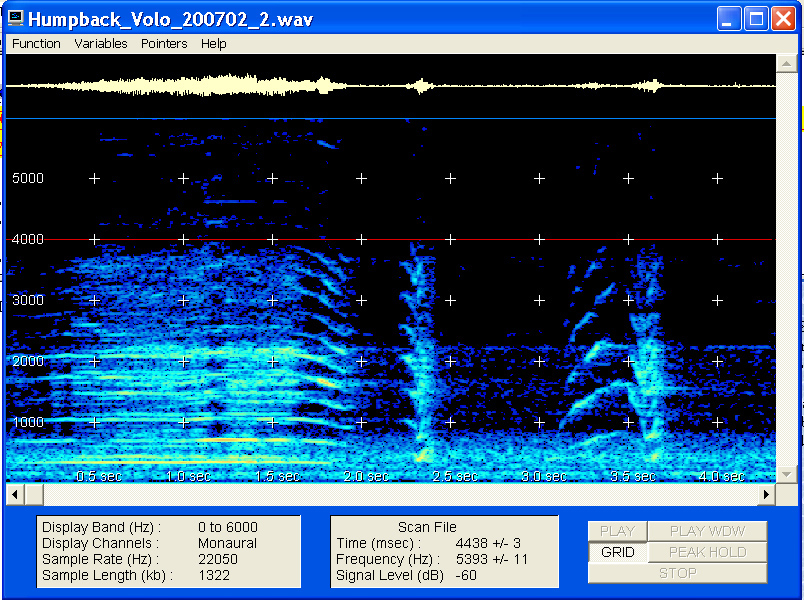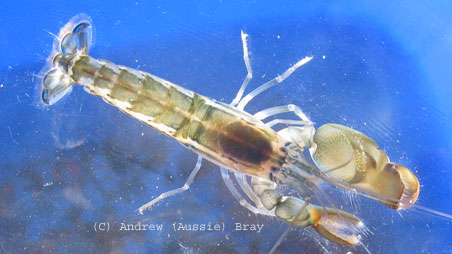|
The audio output from the amplifier (fed by the pre-amp) is normally
connected to headphones, or can be further amplified by plugging it into the
"line'-in" socket of a portable radio/cassette tape player and monitoring
via its speakers. Cassette recorders can be used to record the sounds, but in my
experience introduce a lot of additional tape noise. Professional quality reel
to reel tape recorders are cleaner, but in my case recording was plagued
by AC power hum probably originating in the inverter used to power the AC tape
recorder from 12 Volts DC.
Three short sound bites are available on this web page, all recorded with a laptop using a DIY piezo buzzer hydrophone and the pre-amp etc described elsewhere on this site.
Humpback Whale Sound Sample  The link below is to a small snippet from a recording of a Humpback whale "singing" en-route from Antarctica to tropical calving grounds in July 2002. It was made with the piezo buzzer DIY gear, towed about 8 meters behind the 44' Australian yacht Volo (designed, built, and skippered by Max Riseley). We were doing about 3.5 knots at the time, it was just on dusk, in about 35m of water, a few miles outside Broken Bay (just North of Sydney). The singer was very possibly one of the whales in the picture which had surfaced unexpectedly close to us some hours earlier
Below is a small portion of the above humpback recording, as analysed by the shareware Spectrogram Program
Snapping Shrimp Sound Sample In sea waters shallower than about 60m, and warmer than about 12oC, clicking noises attributed to snapping shrimp are usually audible. The snapping covers our entire hearing range, and like the background noise in a room, limits our ability to hear fainter sounds. Nearby snaps are quite loud, and can often be heard without hydrophones, inside a stationary boat.
The photo is of a snapping shrimp from my cold water marine aquarium - the sound is apparently made by the enlarged and specially adapted left claw. Within the aquarium environment the snapping seems to be associated with repelling predatory crabs near the shrimp's burrow. The crabs convulse and retreat immediately.
This sound file was recorded in the anchorage at Gadji - a sheltered sandy bottomed area near the Isle des Pins in New Caledonia. Nearly all the noise is due to snapping shrimps. Motor Boat Sound Sample This sound was recorded as a yacht under motor passed about 30m from our anchored boat. The longer file also revealed noticeable Doppler effect, but is too large for me to put on line. Snapping shrimp can also be heard.
|



